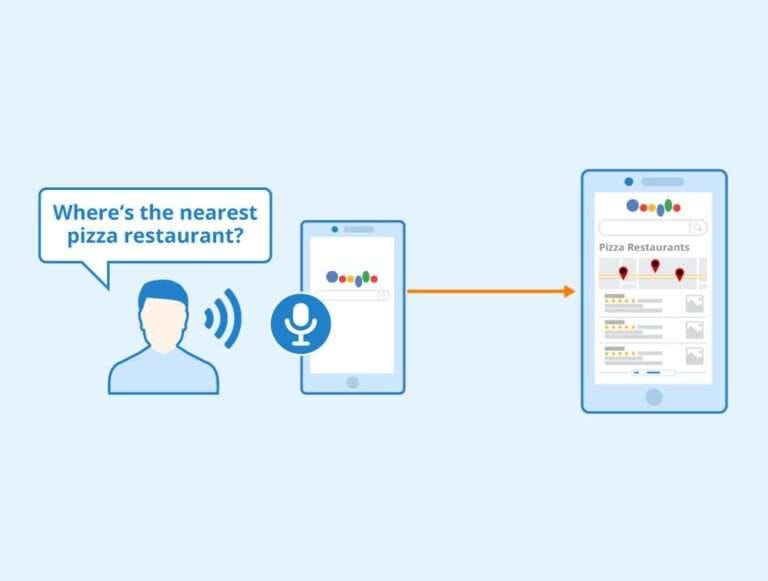What is Multi-Channel Marketing?
Overview
What is Multi-Channel Marketing?
Multi-channel marketing is an essential strategy for businesses looking to reach and engage with their target audience across various channels. It involves using multiple marketing channels, such as email, social media, search engine optimization, and more, to deliver consistent messaging and create a seamless customer experience. By implementing a multi-channel approach, businesses can increase their brand visibility, improve customer engagement, and drive conversions. This strategy allows businesses to meet customers where they are and provide them with a personalized and convenient experience. Omnichannel marketing strategy means integrating all channels to deliver a unified and cohesive brand experience. With the rise of digital technologies and the increasing use of multiple devices, it is crucial for businesses to adopt a multi-channel marketing approach to stay competitive in today’s digital landscape.
Benefits of Multi-Channel Marketing
One of the key benefits of multi-channel marketing is the ability to reach a wider audience. By utilizing multiple channels such as social media, email marketing, and online advertising, businesses can connect with customers across various platforms and increase their brand visibility. Another advantage is the opportunity to engage customers at different stages of the buying journey. With a multi-channel approach, businesses can target customers with personalized messages and offers based on their preferences and behavior. This not only enhances the customer experience but also increases the likelihood of conversion. Additionally, multi-channel marketing allows businesses to gather valuable data and insights about customer behavior and preferences. By analyzing data from different channels, businesses can gain a holistic view of their customers and make data-driven decisions to optimize their marketing strategies. Unifire is a comprehensive multi-channel marketing platform that enables businesses to seamlessly manage and execute their multi-channel campaigns. With features such as audience segmentation, automated workflows, and performance tracking, Unifire empowers businesses to deliver personalized and impactful marketing messages across multiple channels. Take your marketing efforts to the next level with Unifire and unlock the full potential of multi-channel marketing.
Key Components of Multi-Channel Marketing
In order to effectively implement multi-channel marketing strategies, it is important to understand the key components that make up this approach. One of the key insights of multi-channel marketing is the use of cutting-edge tools to reach customers through various channels such as social media, email, and mobile apps. These tools enable marketers to create personalized and targeted campaigns, resulting in higher customer engagement and conversion rates. Additionally, multi-channel marketing involves the integration of different channels to provide a seamless and consistent customer experience. By ensuring that the messaging and branding are consistent across all channels, businesses can build trust and loyalty with their customers. With the right combination of channels and tools, businesses can maximize their reach and effectively engage with their target audience.
Understanding Customer Behavior
The Importance of Customer Behavior Analysis
Understanding customer behavior is crucial for the success of multi-channel marketing. By analyzing customer behavior, businesses can gain valuable insights into their preferences, interests, and purchasing patterns. This information allows marketers to tailor their marketing strategies and messages to effectively target and engage customers across various channels. Customer behavior analysis also helps in identifying the most effective touchpoints and mapping the customer journey. With this knowledge, businesses can optimize their multi-channel marketing efforts and create personalized experiences that resonate with their target audience.
Identifying Customer Touchpoints
Identifying customer touchpoints is a crucial step in multi-channel marketing. It involves understanding the various channels through which customers interact with your brand and identifying the key moments where they engage with your products or services. By mapping out these touchpoints, you can gain valuable insights into customer behavior and preferences, allowing you to tailor your marketing strategies to better meet their needs. Some common customer touchpoints include website visits, social media interactions, email communications, and in-store visits. Analyzing these touchpoints can help you determine the most effective channels for reaching your target audience and guide your decision-making process when choosing the right channels for your multi-channel marketing campaigns. By identifying customer touchpoints, you can create personalized and targeted marketing messages that resonate with your customers at each stage of their journey.
To ensure a comprehensive understanding of customer touchpoints, consider using data analytics tools to track and analyze customer interactions across different channels. This will enable you to gain deeper insights into customer preferences, behaviors, and purchasing patterns. Additionally, conducting surveys and collecting feedback from customers can provide valuable information about their experiences and satisfaction levels at various touchpoints. By leveraging these insights, you can optimize your multi-channel marketing efforts and deliver a seamless customer experience across all touchpoints.
Unifire can help you streamline your multi-channel marketing strategies by providing a centralized platform to manage and track customer interactions across different channels. With Unifire, you can easily integrate your marketing efforts, create consistent brand messaging, and measure the success of your campaigns through key performance indicators (KPIs). Start leveraging the power of multi-channel marketing today with Unifire and unlock new opportunities for growth and customer engagement.
How to Identify Customer Touchpoints:
- Conduct a thorough analysis of your customer journey to identify key touchpoints.
- Use data analytics tools to track and analyze customer interactions across different channels.
- Collect feedback from customers through surveys and interviews.
- Monitor social media platforms and online reviews for customer feedback.
- Collaborate with different teams within your organization to gain insights into customer touchpoints.
- Continuously monitor and update your touchpoint analysis to adapt to changing customer behavior and preferences.
CTA: Get started with Unifire and unlock the power of multi-channel marketing!
Mapping the Customer Journey
Understanding the customer journey is a crucial step in implementing effective multi-channel marketing strategies. By mapping out the various touchpoints and interactions that a customer has with your brand, you can gain valuable insights into their behavior and preferences. This information allows you to tailor your marketing efforts to meet their needs at each stage of the journey. Additionally, mapping the customer journey helps you identify any gaps or areas where you can improve the customer experience. By analyzing data from different channels, such as social media, email marketing, and website interactions, you can gain a holistic view of the customer’s interactions with your brand. This enables you to create personalized and targeted messaging that resonates with your audience. By leveraging these insights, you can optimize your multi-channel campaigns and deliver a seamless customer experience across all channels.
Implementing Multi-Channel Strategies
Choosing the Right Channels
When it comes to choosing the right channels for your multi-channel marketing strategy, it’s important to consider your target audience and their preferences. Building reliable digital channels that align with your customers’ needs and behaviors is crucial for success. Conduct thorough research to identify the channels that your audience is most active on and prioritize those platforms. Additionally, consider the nature of your business and the type of content you want to deliver. For example, if you have visually appealing products, platforms like Instagram and Pinterest may be more effective. On the other hand, if you offer professional services, LinkedIn and industry-specific forums could be the ideal channels. Remember, the goal is to reach your audience where they are most likely to engage with your brand. By carefully selecting the right channels, you can maximize your reach and impact.
Integrating Channels for Seamless Customer Experience
Integrating channels is a crucial step in creating a seamless customer experience. By connecting different touchpoints and channels, businesses can ensure that customers have a consistent and cohesive experience across all platforms. This integration allows for a more personalized and targeted approach to marketing, as data collected from one channel can be used to inform and optimize strategies on other channels. For example, clickmakers can track customer interactions on websites and measurebit can analyze the effectiveness of email campaigns. By integrating these insights, businesses can deliver more relevant and impactful messages to their customers. Additionally, integrating channels enables businesses to provide a seamless transition for customers as they move between different platforms and devices. This ensures that customers can easily engage with the brand and make purchases without any friction. Overall, integrating channels is essential for creating a unified and seamless customer experience.
Measuring Success and Optimization
Defining Key Performance Indicators (KPIs)
Key performance indicators (KPIs) are essential metrics that businesses use to measure the success of their multi-channel marketing campaigns. These indicators provide valuable insights into the effectiveness of each channel and allow marketers to make data-driven decisions to optimize their strategies. By defining specific KPIs, such as conversion rates, customer acquisition costs, and customer lifetime value, businesses can track the performance of their marketing efforts and identify areas for improvement. Go to channel is an important concept in multi-channel marketing, as it refers to the ability of customers to switch between different channels seamlessly. By understanding this behavior, businesses can design their channels to provide a consistent and engaging experience for customers across all touchpoints. To effectively define KPIs, businesses should consider their overall marketing goals, target audience, and the specific objectives of each channel. By aligning KPIs with these factors, businesses can measure the success of their multi-channel marketing campaigns and make informed decisions to drive growth and enhance the customer experience.
Tracking and Analyzing Channel Performance
Tracking and analyzing channel performance is a crucial step in the multi-channel marketing process. By monitoring the performance of each channel, marketers can gain valuable insights into the effectiveness of their strategies and make data-driven decisions to optimize their campaigns. Key metrics such as click-through rates, conversion rates, and customer engagement can provide valuable information about which channels are performing well and which ones may need improvement. Additionally, tracking channel performance allows marketers to identify any gaps or inconsistencies in their messaging and make necessary adjustments to ensure a seamless customer experience across all channels. By leveraging the power of customer-centric strategies, marketers can unleash the full potential of multi-channel marketing and drive better results for their businesses.
Optimizing Multi-Channel Campaigns
After implementing multi-channel strategies, it is crucial to measure the success of your campaigns and optimize them for better results. Defining Key Performance Indicators (KPIs) is the first step in measuring success. These KPIs can include metrics such as conversion rate, customer acquisition cost, and return on investment. By tracking and analyzing channel performance, you can identify which channels are driving the most engagement and conversions. This data will help you make informed decisions about where to allocate your marketing budget and resources. Additionally, optimizing multi-channel campaigns requires continuous testing and experimentation. By testing different variations of your messaging, creative assets, and targeting strategies, you can identify what resonates best with your target audience. This iterative process allows you to refine and improve your campaigns over time. To optimize multi-channel campaigns effectively, it is essential to leverage OTT and attribution solutions. These solutions provide insights into the effectiveness of your advertising across different channels and touchpoints. They help you understand the customer journey and attribute conversions accurately. By leveraging these solutions, you can make data-driven decisions and allocate your resources more effectively. In conclusion, optimizing multi-channel campaigns is a continuous process that requires data analysis, experimentation, and the use of advanced solutions to drive better results.
Measuring success and optimization are crucial aspects of any business. At Unifire, we understand the importance of analyzing data and making informed decisions to drive growth. Our innovative platform allows you to extract summaries, keywords, and titles from your podcast, helping you repurpose your content and reach a wider audience. Whether you’re a content creator, marketer, or business owner, Unifire provides the tools you need to measure success and optimize your strategies. Visit our website today to learn more and start maximizing the potential of your content.









 العربية
العربية Čeština
Čeština Dansk
Dansk Nederlands
Nederlands English
English Suomi
Suomi Français
Français Deutsch
Deutsch Italiano
Italiano 日本語
日本語 한국어
한국어 Norsk bokmål
Norsk bokmål Polski
Polski Português
Português Русский
Русский Español
Español Svenska
Svenska